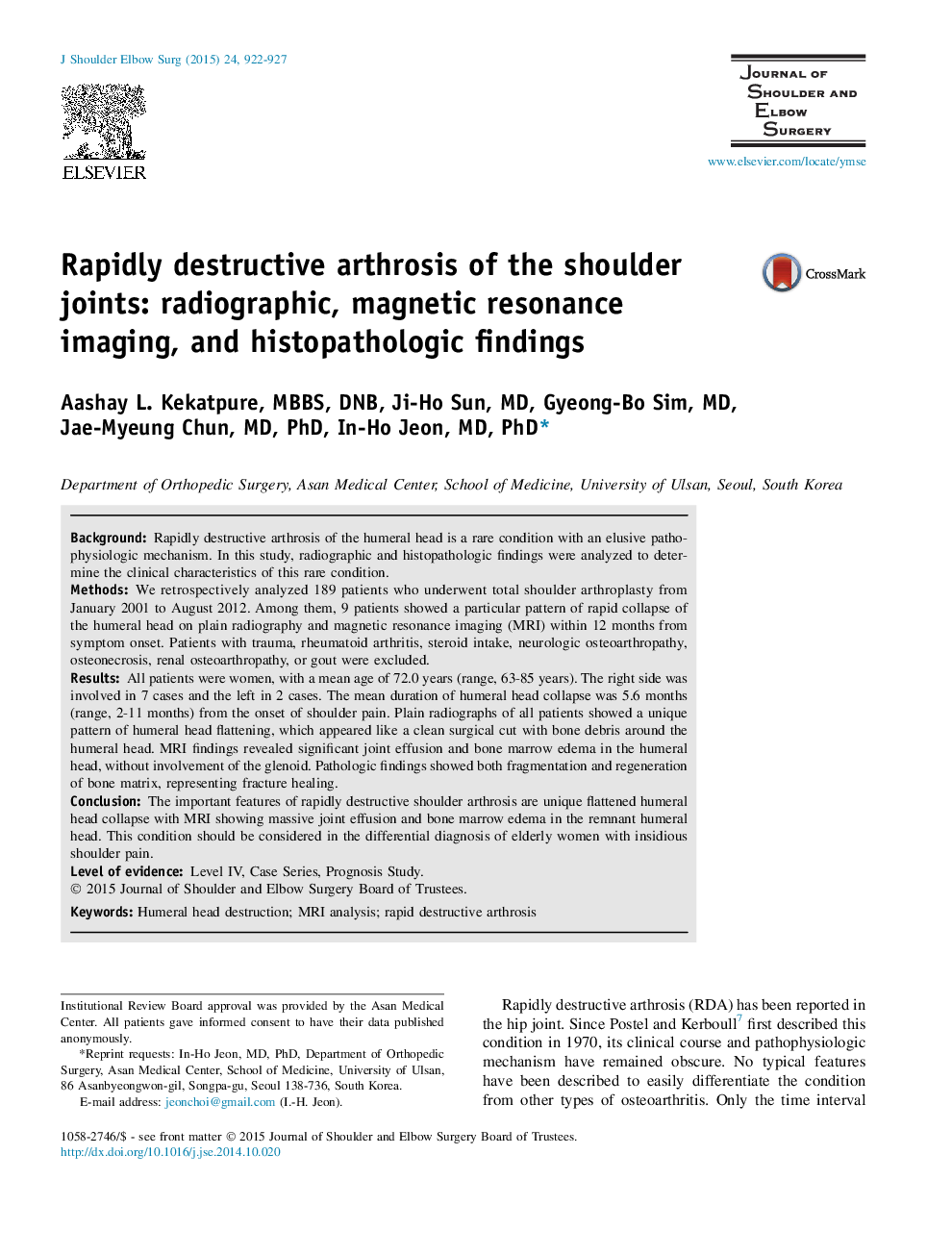| Article ID | Journal | Published Year | Pages | File Type |
|---|---|---|---|---|
| 4073170 | Journal of Shoulder and Elbow Surgery | 2015 | 6 Pages |
BackgroundRapidly destructive arthrosis of the humeral head is a rare condition with an elusive pathophysiologic mechanism. In this study, radiographic and histopathologic findings were analyzed to determine the clinical characteristics of this rare condition.MethodsWe retrospectively analyzed 189 patients who underwent total shoulder arthroplasty from January 2001 to August 2012. Among them, 9 patients showed a particular pattern of rapid collapse of the humeral head on plain radiography and magnetic resonance imaging (MRI) within 12 months from symptom onset. Patients with trauma, rheumatoid arthritis, steroid intake, neurologic osteoarthropathy, osteonecrosis, renal osteoarthropathy, or gout were excluded.ResultsAll patients were women, with a mean age of 72.0 years (range, 63-85 years). The right side was involved in 7 cases and the left in 2 cases. The mean duration of humeral head collapse was 5.6 months (range, 2-11 months) from the onset of shoulder pain. Plain radiographs of all patients showed a unique pattern of humeral head flattening, which appeared like a clean surgical cut with bone debris around the humeral head. MRI findings revealed significant joint effusion and bone marrow edema in the humeral head, without involvement of the glenoid. Pathologic findings showed both fragmentation and regeneration of bone matrix, representing fracture healing.ConclusionThe important features of rapidly destructive shoulder arthrosis are unique flattened humeral head collapse with MRI showing massive joint effusion and bone marrow edema in the remnant humeral head. This condition should be considered in the differential diagnosis of elderly women with insidious shoulder pain.
